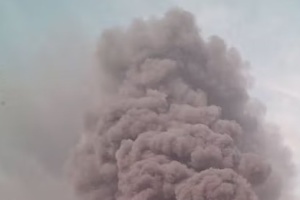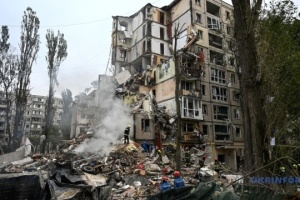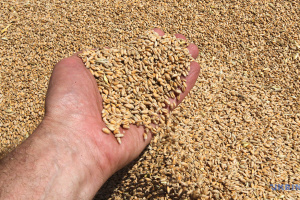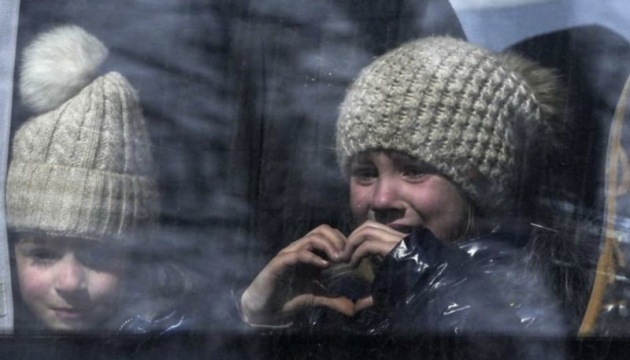
Killings, abductions, torture: Russia’s crimes against Ukrainian children
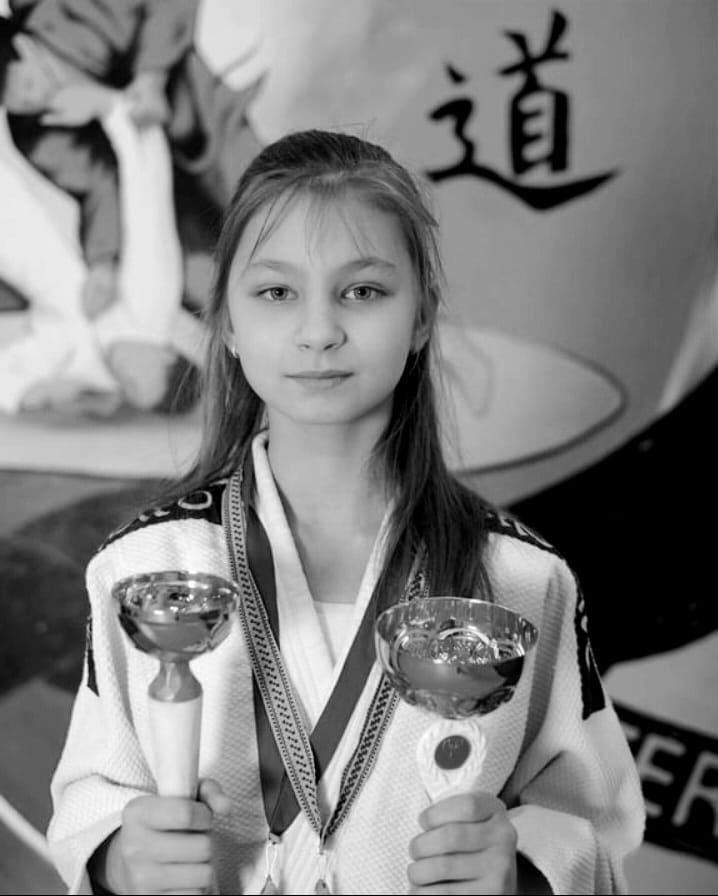
Victoriia Ivashko. Source: Mykhailo Koshliak / Facebook
On the evening of the next day, during the Russian shelling of the Kupiansk community in Kharkiv region, a four-year-old boy was injured.
Ukrainian children suffer from Russian aggression every day. The number of dead, wounded, and missing kids is measured in hundreds, according to official data.
On June 4, Ukraine commemorated the memory of children who died as a result of Russian armed aggression.
But killing and injuring are just the tip of the iceberg. Russia deliberately and systematically violates the basic rights of minor citizens of Ukraine and commits crimes against them. Children are separated from their parents, deported, and subjected to various forms of violence.
The Center for Strategic Communication and Information Security reminds of the most common crimes of Russians against Ukrainian children.
Strikes on cities and targeting of evacuation convoys: How Russia kills Ukrainian children
According to the Prosecutor General’s Office and the Office of the Commissioner for Human Rights, 484 children were killed, 992 were injured, and 393 are considered missing amid the full-scale war, which has lasted for more than 15 months. From spring 2014 to February 24, 2022, Russian aggression took the lives of 152 young Ukrainians, injuring another 146.
These statistics consider only the cases documented in criminal proceedings. It is currently impossible to calculate the exact number of victims of war among children in the devastated Mariupol and temporarily occupied territories.
Children are killed and injured amid hostilities or near the front line, they get killed by Russian missiles, shells, and bullets fired by the Russian military, as well as mines.
The Pryimenko brothers, 15-year-old Artem, 10-year-old Yehor, and five-year-old Kyrylo, were killed along with their parents and grandmother on March 8, 2022, when a Russian air bomb fell in their yard in Sumy. The family could not evacuate the city on time.
The eldest brother had won the title of Ukrainian champion in sambo shortly before the invasion. The boy was included in the Ukrainian national team. He was supposed to participate in the European Championship among boys and the World Championship among cadets.
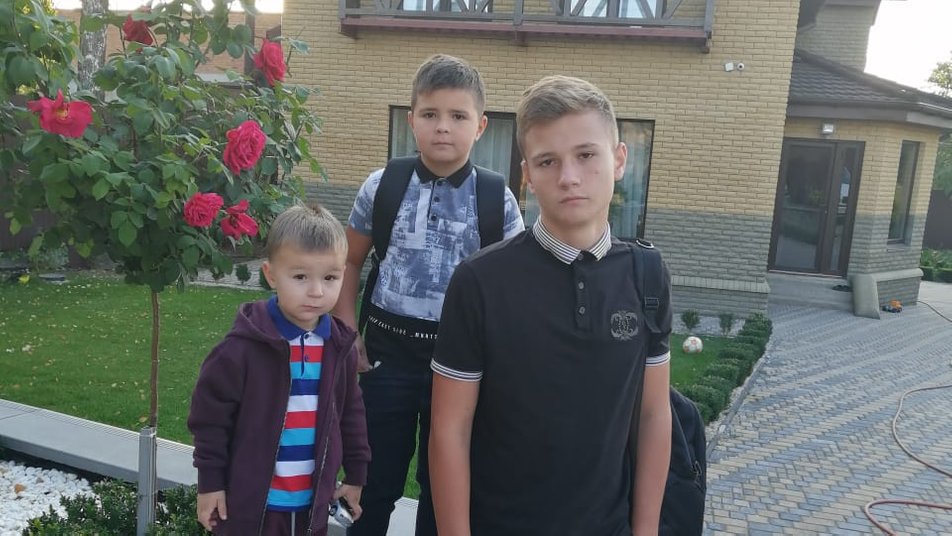
The Pryimenko brothers. Source: Memorial
In March 2022, during the Russian bombing of Izium in Kharkiv region, another family was killed: the spouses Dmytro and Olena Stolpakov, their children — eight-year-old Oleksandra and five-year-old Olesia, as well as Olena’s parents, her sister, and grandmother. The bodies were identified after the city was liberated from the invaders.
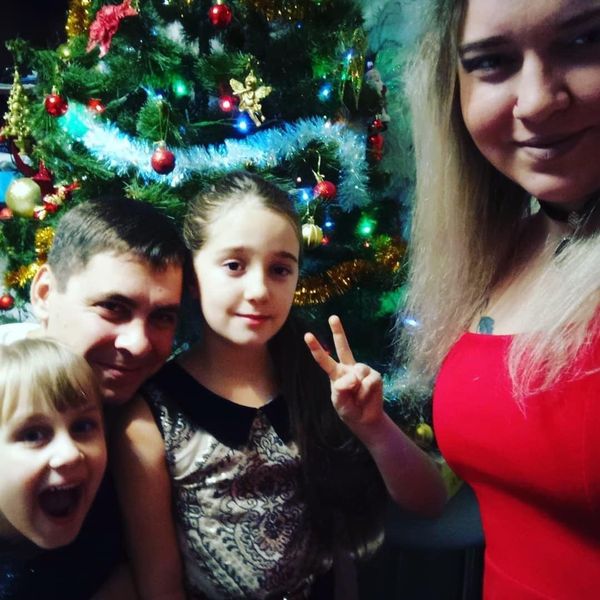
The Stolpakov family. Source: Instagram
On April 8, 2022, a Tochka-U tactical missile hit the Kramatorsk railway station in Donetsk region, killing seven and injuring 16 children. 11-year-old Yana Stepanenko lost both legs. The girl and her mother then traveled to the United States to get prosthetics and rehabilitation.
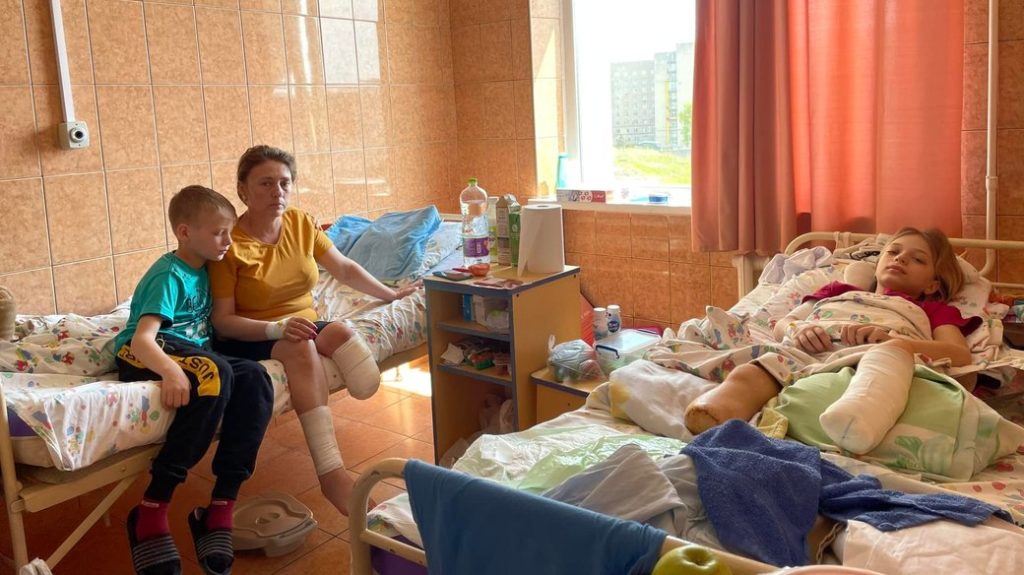
The Stepanenko family. Source: First Medical Association of Lviv
A Russian missile fired from the Caspian Sea on April 23, 2022, hit a high-rise building in Odesa where it killed eight people. The youngest of them, Kira Hlodan, was not even four months old. She died alongside her mother.
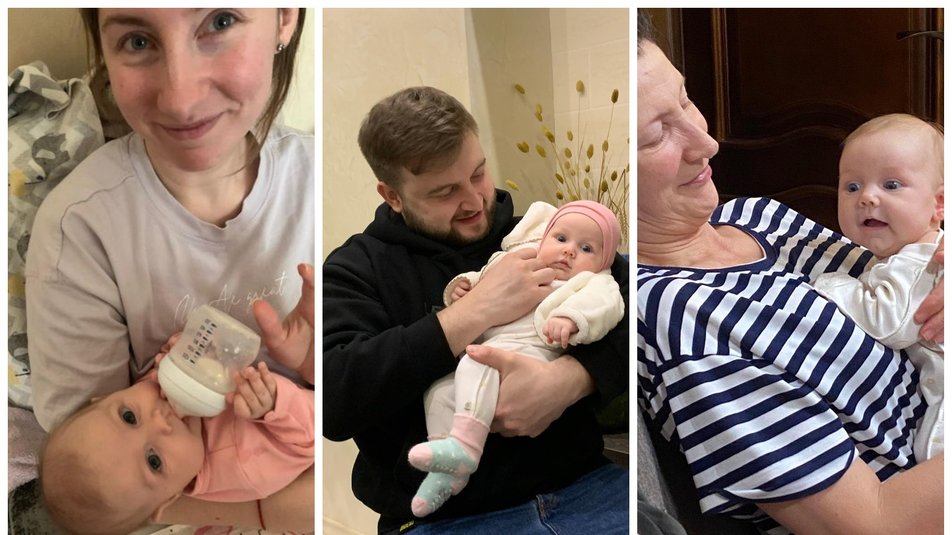
The Hlodan family. Source: Suspilne
The youngest victim of Russian invaders was Kyrylo from Vilniansk, Zaporizhzhia region. The boy, who was only two days old, died from a missile that hit a maternity ward of the district hospital on the night of November 23, 2022.
The photo, taken by Evgeniy Maloletka after the Russian bombing of the maternity ward in Mariupol, was published by the world’s leading outlets. It became one of the symbols of this war. The photographer captured Iryna Kalinina, a wounded woman in labor. The women underwent an emergency caesarean section, but neither the mother nor the infant survived.
Russian propaganda claimed that the bombing of the maternity ward and the death of the mother were a “hoax.”
The above-mentioned cases are either silenced by Russian propaganda, or declared “fake news” (like the bombing of the maternity ward in Mariupol), or justified by claims of the inevitability of “collateral damage.” But this dubious “excuse” does not work whatsoever when it comes to shooting civilians, including minors. Wagner Group mercenary Azamat Uklarov admitted in an interview with the project Gulagu.net that he and his “colleagues” had personally killed women and children in Bakhmut and Soledar. The youngest victim, according to him, was five years old.
The systemic phenomenon observed in 2022 was the shooting of civilian cars and evacuation convoys on the routes controlled by the Russian military. The word “Children” inscribed on cars did not stop the occupiers. Neither did it not stop the Russian pilots who dropped a bomb on the Mariupol Drama Theater, with civilians hiding in its basement.
On September 25, 2022, the Russian military shot a convoy of civilians on the Kurylovka-Pishchane road in Kharkiv region using IFVs and infantry weapons. Those who tried to escape were killed. Thirteen children and 13 adults died, including a pregnant woman. Most of the bodies were burned. Five-year-old Polina and one-year-old Mykhailo, whose parents died, were saved by a random passer-by. Their 12-year-old sister Maryna was wounded, Russians took the girl to the occupied Luhansk and filmed in propaganda television.
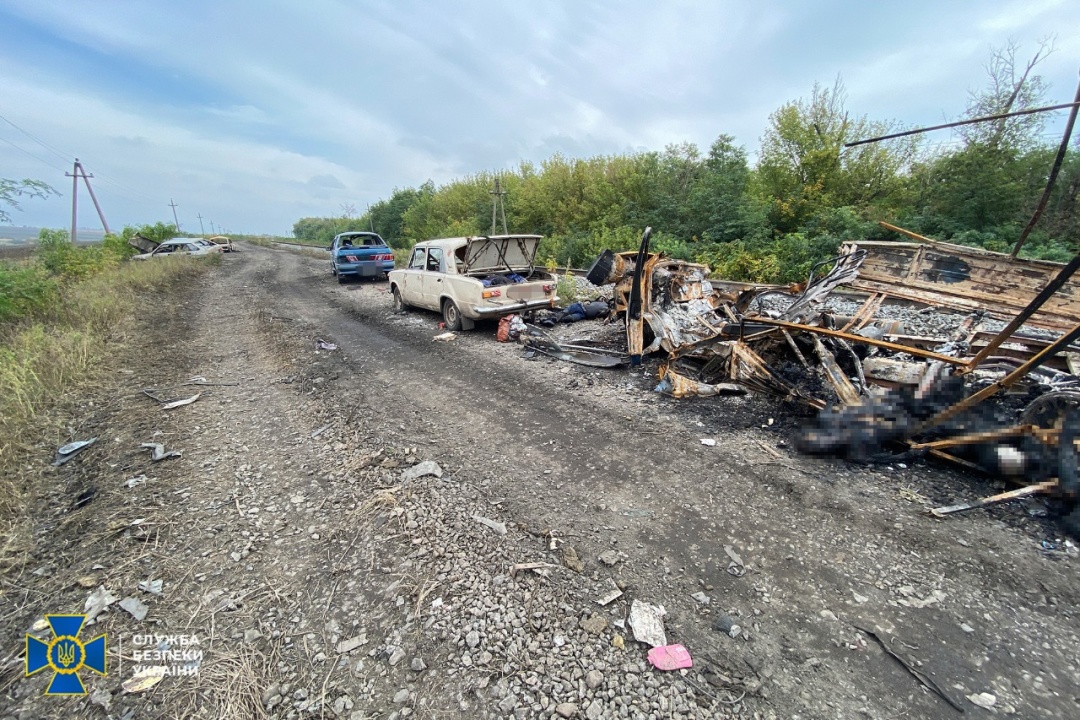
A convoy shot at near Kupiansk. Source: Prosecutor General’s Office
The strike targeting a humanitarian convoy in Zaporizhzhia on September 30, 2022, also killed two children: an 11-year-old girl and a 14-year-old boy. A five-year-old girl was injured. A total of 32 people died that day.
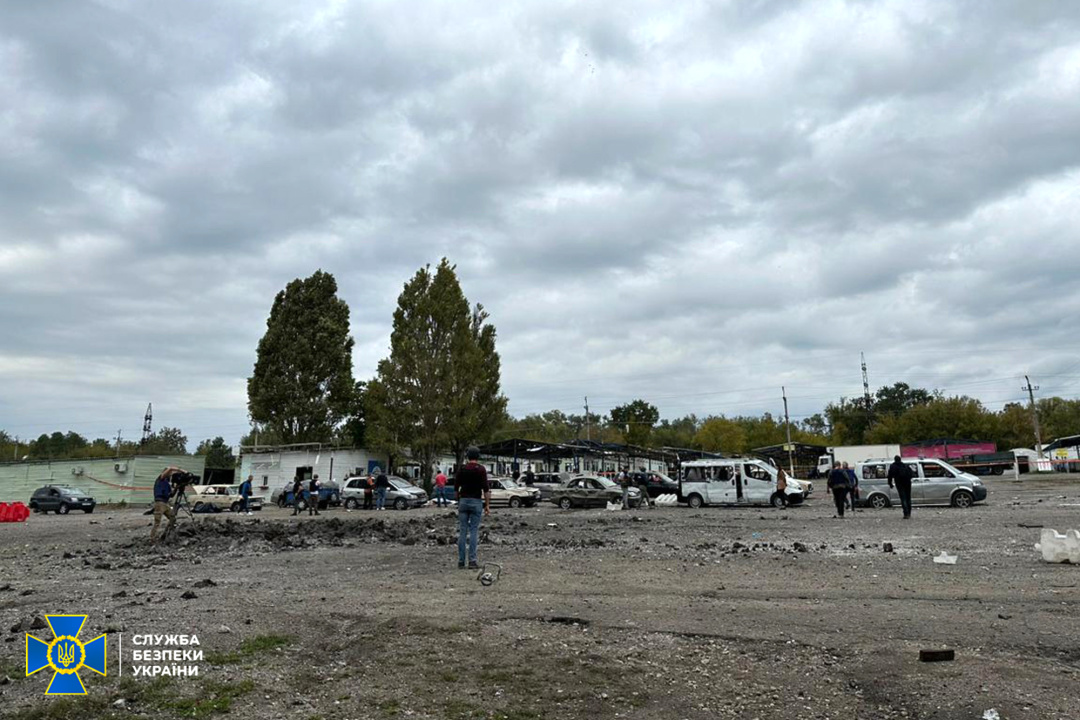
A convoy shot at in Zaporizhzhia. Source: Prosecutor General’s Office
The cemetery of destroyed cars in Irpin, Kyiv region, served as a reminder of this type of crime committed by the Russians. In April 2023, the Prosecutor General’s Office forwarded to court an indictment against a company commander of the 106th Guards Airborne Division, Stanislav Stenin. The investigation established that he had given the order to shoot a convoy of cars with inscriptions “Children” and “Evacuation” on the road from Irpin. Back then, Russians killed five and wounded seven people, including a child.
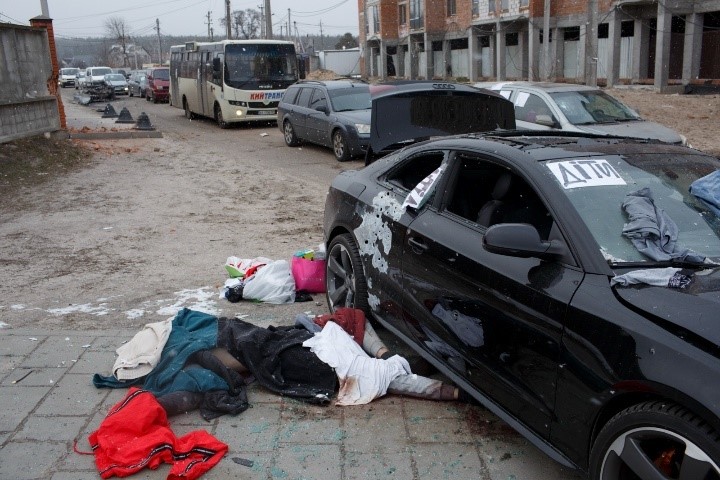
Cars shot at in Irpin. Source: Prosecutor General’s Office
Deportations and separation from parents
Russia has been practicing the displacement of children from the territory of Ukraine since the outset of aggression in 2014, hiding behind loud statements about “rescue” and “evacuation” from combat zones. The campaign, which took on new dimensions after February 24, 2022, involves both the government structures, various “charitable foundations” and “volunteer initiatives.”
The occupiers not only take families with children to Russia, but also kidnap boarding school students, orphans, as well as separate children from their families. In particular, the practice of sending children to health camps with the subsequent blocking of their return to their parents has become widespread. That’s especially so if during the “recovery” the native cities and villages of these children were liberated.
It is worth noting that the creation of obstacles for families seeking to bring back their children is a violation of International Humanitarian Law, in particular, the Fourth Geneva Convention, and can be interpreted as a war crime.
Ukraine has established the names and approximate location of more than 19,500 children deported to Russia and the occupied territories. So far, only 371 children have been brought back home.
According to Ukrainian Ombudsman Dmytro Lubinets, the number of abducted children can reach tens or even hundreds of thousands. After all, territories where about 700,000 underage citizens lived were under Russian occupation. In February 2023, the Russian propaganda news agency TASS, referring to the law enforcement forces, boasted that 738,000 children from Ukraine arrived in the territory of Russia.
The Kremlin treats the population of the occupied territories as a trophy and perceives it as a resource for solving demographic problems in Russia. By the decree of May 30, 2023, Putin introduced a simplified procedure for granting Russian citizenship to Ukrainian orphans, incapacitated persons, and children left without parental care on the initiative of guardians from among Russian citizens, owners of so-called “passports” of the “LPR/DPR,” and organizations caring for orphans.
It was for the illegal deportation of Ukrainian children from Ukraine that the International Criminal Court issued an arrest warrant for Putin and Russian children’s ombudsman Maria Lvova-Belova.
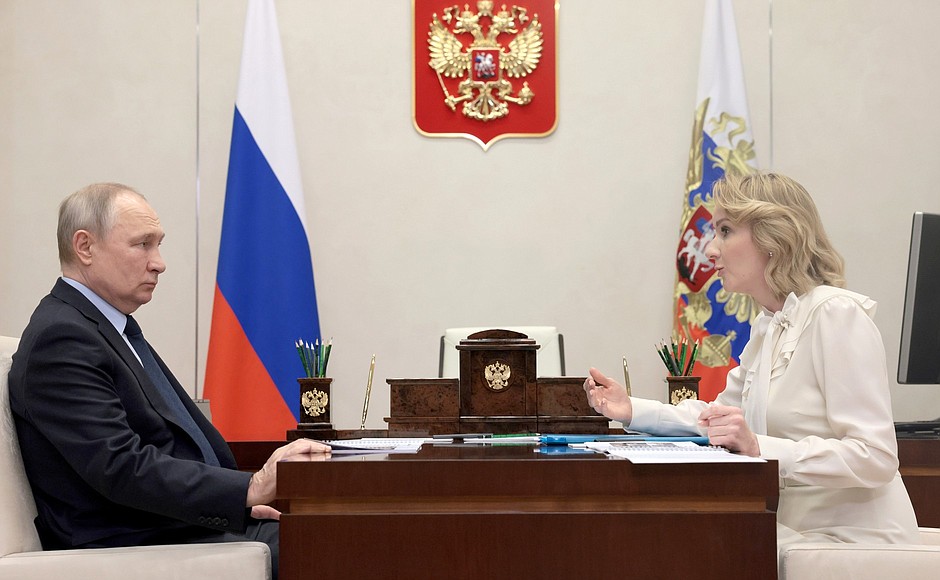
Putin and Lvova-Belova. Source: kremlin.ru
15-year-old Artem from Kupiansk, together with twelve other children aged 7 to 17 years, were taken by Russians to the occupied Perevalsk, Luhansk Oblast, and from there to the occupied Crimea. The occupiers kidnapped the children, allegedly “saving” them from the counteroffensive of the Ukrainian army. This story has a happy ending: the boy’s mother, Nataliia Zhornyk, with the help of volunteers from the Save Ukraine Foundation, managed to bring her son home, most of the children taken away remain in the occupied territory or in Russia. The woman shared the story of the rescue of the child with reporters of The New York Times.
Single father Yevhen Mezhevyi was separated from his three children during filtration measures in Mariupol in the spring of 2022. While his father was in Olenivka penal colony, little Matvii, Sviatoslav, and Oleksandr were taken to the children’s health center “Poliana” in Moscow region, a structural unit of the Children’s Medical Centre of the Presidential Administration. Together with the children of Mezhevyi, more than 30 minor citizens of Ukraine were taken to Russia. Among them was Filip from Mariupol, who was “adopted” by Maria Lvova-Belova. Yevhen Mezhevyi managed to get out, bring back the children with the help of volunteers, and go with them to Latvia.

The Mezhevyi family. Source: Radio Liberty
Children who returned home tell about the humiliation, psychological and physical violence that they had to endure in Russian camps. The ban on communicating in Ukrainian, the ban on communicating with relatives in Ukraine, the daily performance of the Russian anthem, ideological indoctrination, threats — this is what everyone talked about. The evidence of preparation for adoption in the presence of parents or other relatives in Ukraine is typical.
Torture and violence
From the first days of the occupation, Russians began to build a system of terror and abuse of prisoners of war and civilian hostages. In Kharkiv Oblast alone, after the de-occupation, Ukrainian law enforcement officers found 25 torture chambers. People who went through them gave testimonies of beatings, torture with electric current, hot metal, hunger, prohibition to sleep, imitation of shooting, etc.
In Kherson, the occupiers set up a torture chamber for minors. As reported by Dmytro Lubinets, Russians called the room in which the teenagers were kept a “children’s chamber.” The occupiers tortured a 14-year-old boy because he photographed military equipment. The teenager was not fed, water was given once a day, and it was claimed that his parents allegedly refused him.
Violence against civilians, including rape, is commonplace in the Russian military. As of the end of March, Ukrainian prosecutors and police officers registered criminal proceedings for 175 episodes of sexual violence by the Russian military during the occupation. Among the victims are 13 children: 12 girls and one boy aged four to 17 years. Law enforcement officers admit that the real number of crimes is significantly higher. Not all rape victims are willing to talk about it.
The gravity of the crimes of Russia against Ukrainian children is difficult to overestimate. It is not only measured by the number of people killed, injured, or subjected to violence. Ukraine will still have to calculate how many children became orphans, lost their relatives due to the actions of the Kremlin, assess the impact on the physical health and psycho-emotional state of those who are stressed due to change of residence, regular shelling and air alert, separation from their parents. That is why all Russian war criminals should be punished for the suffering of every Ukrainian child.
Center for Strategic Communication and Information Security

